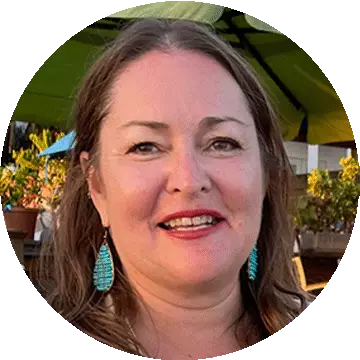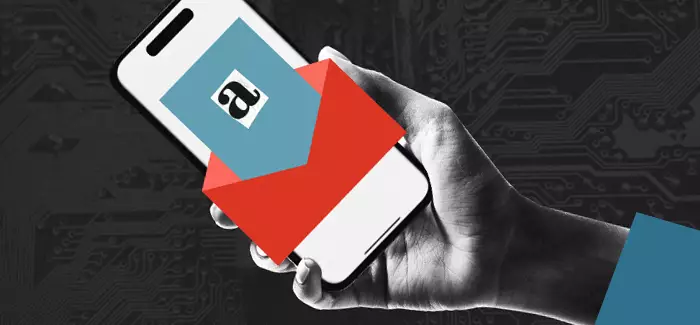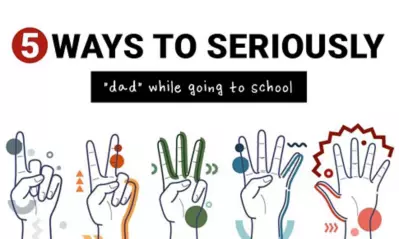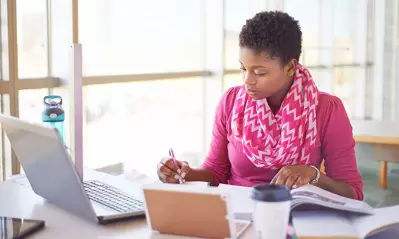How 2 UOPX graduates are changing the accessibility landscape

Written by Megan McMorris

As seen in Alumni Chronicles Magazine.
The word accessibility is often misunderstood. While some might think strictly of wheelchair access when they hear the term, that’s just one segment of the spectrum that exists under the accessibility umbrella.
“The word accessibility is thrown around without clearly defining it,” says Kelly Hermann, a vice president at University of Phoenix. “These terms aren’t necessarily always universal, so it’s important to make sure we have a shared understanding of what it is.”
The Office for Civil Rights at the U.S. Department of Education defines the term as, “when a person with a disability is afforded the opportunity to acquire the same information, engage in the same interactions and enjoy the same services as a person without a disability in an equally integrated and equally effective manner, with substantially equivalent ease of use.”
The goal of accessibility experts and advocates alike is to make awareness and accommodations automatically built into our everyday environment. “It’s important to be proactive and think ahead about what the needs are and try to remove barriers before they [become] barriers,” Hermann says.
As the two alumni you’re about to meet prove, bridging the accessibility gap is more than the right thing to do. It’s also a goal that can inspire creativity.
App for accessibility
Growing up, Jon Mowl (MBA, 2016) and his brother would turn chores into a game. “We’d put some challenges into the chores, like timing each activity or challenging each other to throw trash a certain amount away from the garbage can, things like that to make it fun,” says Mowl. “Gamifying things has always been a part of my life.”
So, when he decided to create an app that would help others learn American Sign Language (ASL), it was only natural that he would turn it into a game.
“I come from a family of educators, I love to teach, and I believe that the learning process should be fun,” says Mowl, who is a fourth-generation Deaf person.
His aha moment for creating the Play With ASL app came when he was attending a sporting event. “I was sitting near a family who had a restless kid, so his parents gave him a phone with the rule that he had to play educational games, but all the games were led by someone who was able to speak,” he recalls. “It occurred to me that my child would not have that same opportunity, that same accessibility to learn ASL. So, I saw the need really quickly, and it inspired me.”
The result was Play With ASL, an app that combines language curriculum (ASL) with gamification and the technology of an interactive app.
Play With ASL took second place at the SCORE Small Business Pitch Competition in Los Angeles in September 2024, and Mowl is using his winnings to develop additional games, add deaf developers and further his overall vision.
To underscore the importance of his mission and the Play With ASL app, Mowl carefully crafted his live pitch for the SCORE competition. It began with Mowl signing and introducing himself while the interpreter remained silent. The audience and judges started looking confused until the interpreter finally chimed in.
“Everyone was sitting there puzzled, and then we started with, ‘Oh, sorry, I didn’t realize the language deprivation filter was on, so let me go ahead and turn that off,’ because I wanted to drive the point home that deaf children experience daily language deprivation,” says Mowl, who has two young deaf children who are learning to sign.
Mowl has already received positive feedback about his app from educators who can use it in their classroom environments. “I tried to design this so teachers can easily integrate this into their learning management system,” he says. “I was able to generate game parameters and publish a QR code so that students can download the code and play the game, and the results will get sent to the teacher.”
He points out that Play With ASL is not just for educators, and that ASL shouldn’t just be for the Deaf community. His vision is for everyone to learn ASL at school, just like they learn English. “ASL is a beautiful, visual language, and I encourage everyone to learn it,” says Mowl. “It’s always beneficial to know more than one language, so why not have everyone learn ASL in school along with English, and have it be a part of everyone’s daily life?”
Teaming up in Texas
When Dylan Rafaty (BSIOP, 2019) graduated from his Texas high school’s special education program, he had a sixth grade–level education. “I basically had to start over when I went to college,” says Rafaty, who is deaf in his right ear, hard of hearing in his left ear, and has spinal back and neck fusions that limit his mobility.
It took him six years of community college to get up to speed. “It was a time of uncertainty, frustration and disappointment,” he recalls. But from that humbling experience he found a mission: helping educate others about the needs of the disabled. “Special education during my time in public schools was tough, but it gave me a real-world perspective about how I could help solve those problems,” he says.
He started by self-publishing a book in 2012 titled Occupy Special Education: Children Should Be Seen and Heard. The book was designed to “improve and strengthen special education to make it more student-centered,” Rafaty says.
More recently, in 2020, he founded the North Texas Disability Chamber, a nonprofit dedicated to educating community members about the needs of people with disabilities. “We convene members of the disability community and those without disabilities to talk about how we can work together and partner with other organizations and companies to advance accessibility, equity and disability inclusion in the region,” he says.
As president and CEO of the organization, Rafaty didn’t stop there. He next focused on educating local Texas businesses, partnering with the Dallas Regional Chamber to create the Disability Inclusion Toolkit. The kit, which won the Governor’s Committee on People with Disabilities award for being the “most innovative local organization project,” was designed to help companies assess and maximize their inclusion of individuals with disabilities.
Rafaty credits his time at UOPX for helping open educational doors that previously seemed shut to him. “University of Phoenix provided the Industrial-Organizational Psychology program that allowed me to study workplace behaviors and organizational behaviors, opening a whole new door for me to understand the challenges in our community, specifically around disabilities,” he says.
Rafaty has gone on to obtain a master’s degree at Southern Methodist University in dispute resolution, and is working on his doctoral degree in the education in organizational change and leadership program at the University of Southern California.
As for future goals, Rafaty is focusing on not only providing equal access but also on normalizing disabilities so they’re a part of everyone’s day-to-day landscape. “We need to look beyond providing just an accessible space for getting from point A to point B,” he says. “The idea of accessibility is to ensure that we’re [putting] features or systems in place to ensure that everyone can participate. It’s time that we normalize disability.”
Learn more about the Student Accommodations Office at University of Phoenix.
Read more articles like this:

ABOUT THE AUTHOR
Megan McMorris has written lifestyle and wellness stories for Glamour, Cosmo, Marie Claire, Men’s Health, Readers Digest, Shape, and Runner’s World, among many others. While the magazine world has changed drastically during her 30-year career, she’s recently found a new (and happy) home with higher ed publications. She’s written for Purdue U, Wright State U, Bowling Green State U, U of Richmond, Colorado Mesa U, and Mt. Hood Community College. Find her at www.meganmcmorris.net.
This article has been vetted by University of Phoenix's editorial advisory committee.
Read more about our editorial process.


